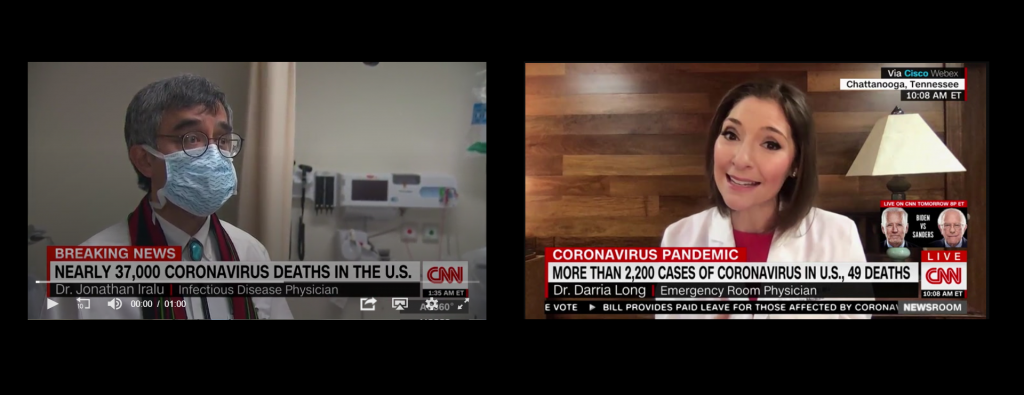A key societal question involves just who all of the experts are that television news stations are turning to during events like Covid-19 or other major world events. Given that many stations typically have a standing set of well-known experts they turn to regularly, facial recognition is often cited as a quick way to inventory who's speaking on the news by using external commercial celebrity facial recognition APIs to scan through footage for well-known commentators, especially a network's own personalities. Despite their potential ease of use, such tools pose vast privacy and ethical concerns and during events like Covid-19 their utility would likely be much diminished as networks turn to a vast new cast of commentators, many of whom are unlikely to appear in facial databases.
Instead, chyrons offer a non-biometric approach to tracking expert commentary that leverages the fact that television news stations typically display the name, title and affiliation of interviewees in the chyron text towards the bottom "lower third" of the screen during the entire or majority of the time the person is on-air.
For example, take Dr. Darria Long, Clinical Assistant Professor at the University of Tennessee, which CNN has turned to regularly over the past month. A search of closed captioning yields just 7 mentions of her name spoken out loud, several of them misspelled by the transcriptionist. In contrast, scanning the complete onscreen text of CNN since Jan. 25 yields 1,099 seconds of airtime in which her name appeared, reflecting appearances in a range of settings.
Similarly, Dr. Jonathan Iralu does not appear at all in the closed captioning for CNN since the start of this year. In contrast, onscreen OCR picks up 40 seconds of airtime in which his name appeared, most of which his face was covered by a mask, which would render most commercial biometric APIs unable to identify him.
Putting this all together, chyrons offer a powerful mechanism for cataloging the myriad onscreen experts interviewed on television news and better understanding who networks turn to to inform their viewers.
